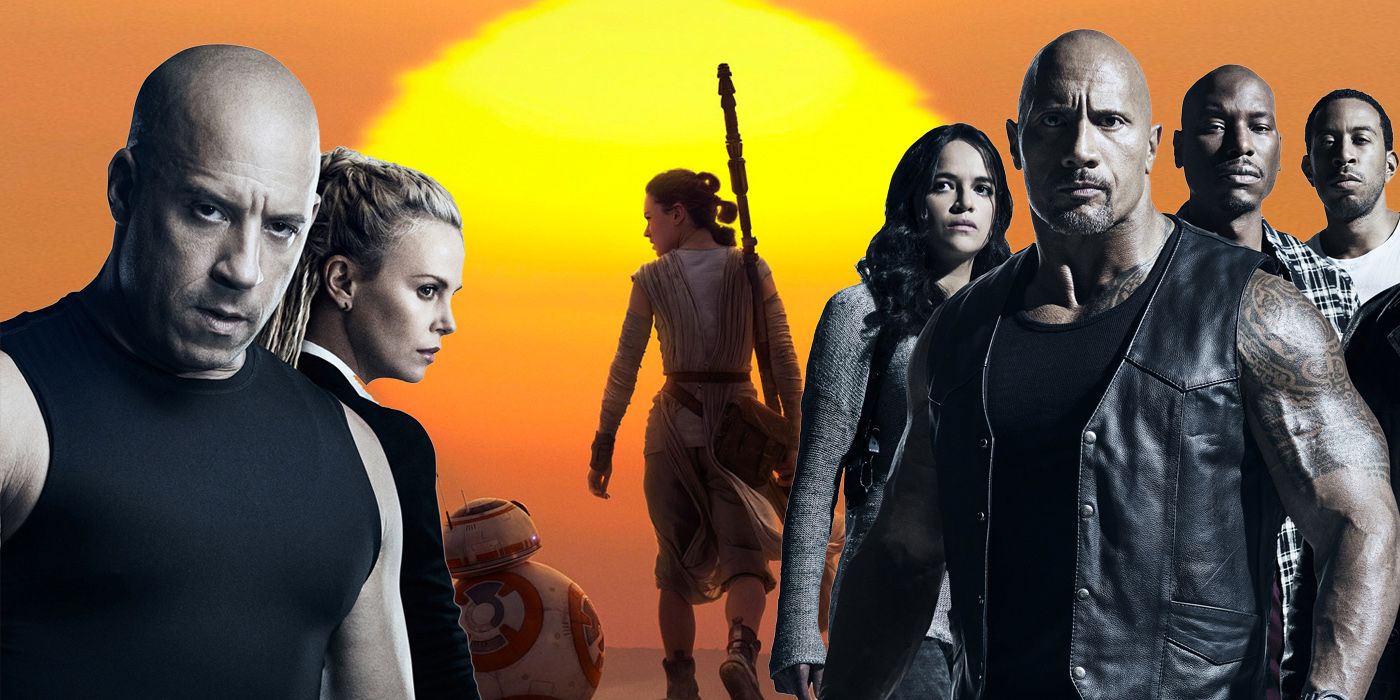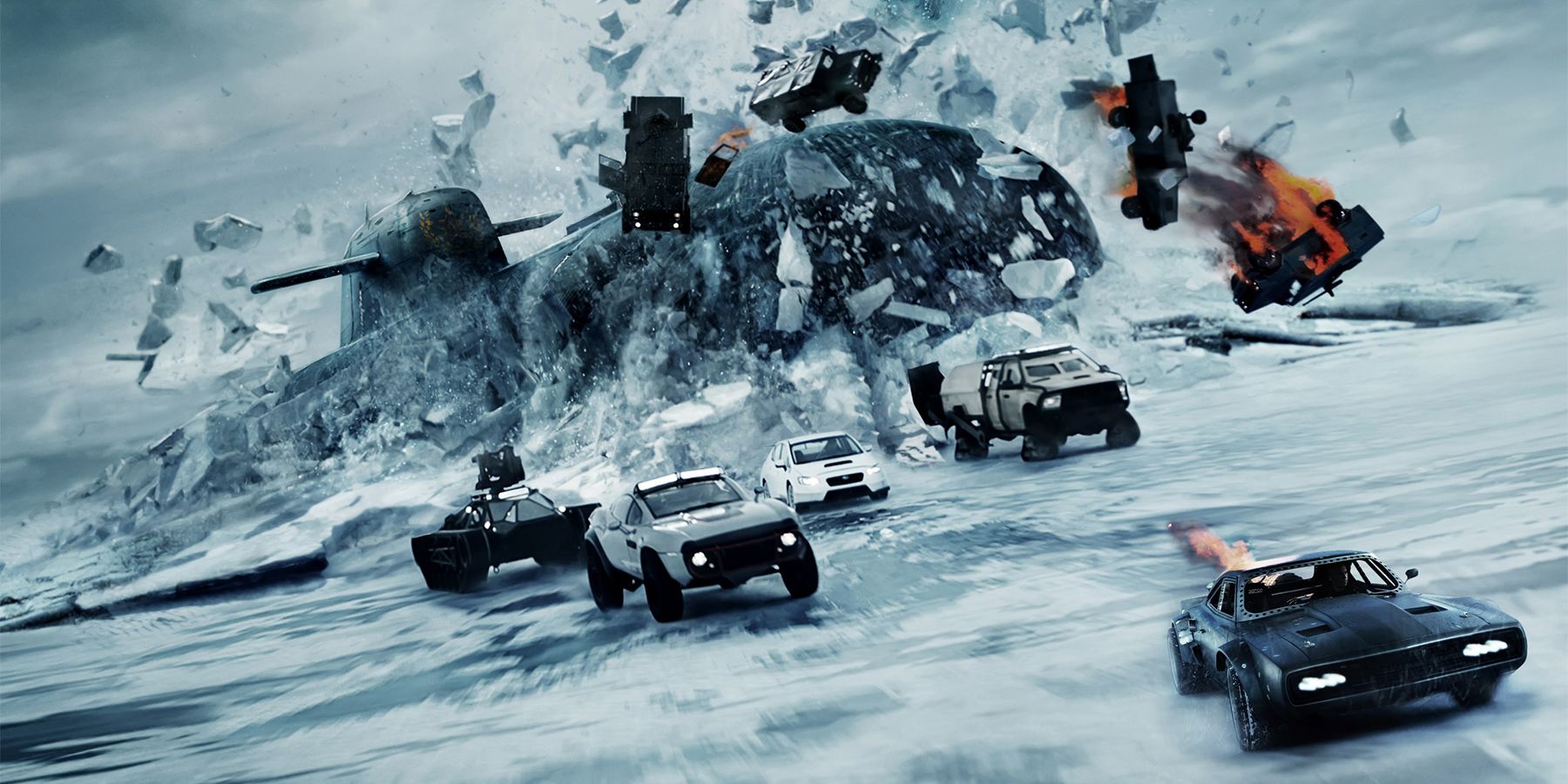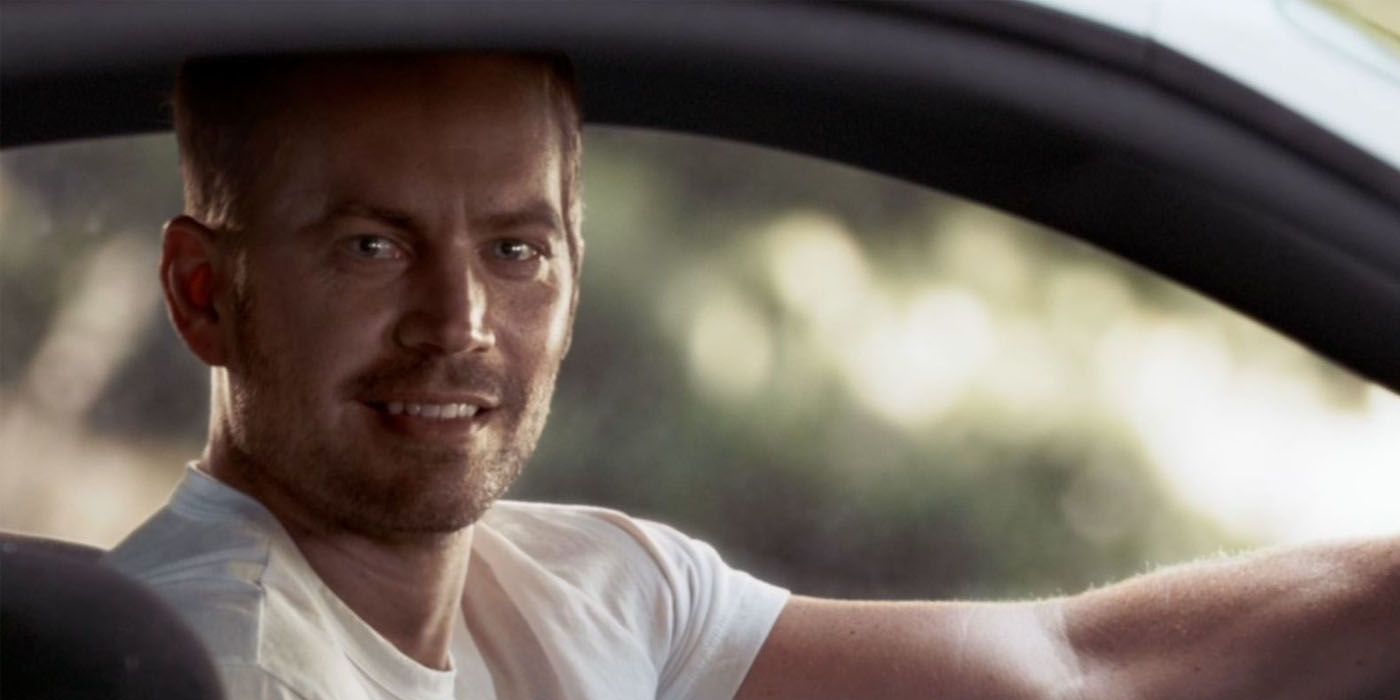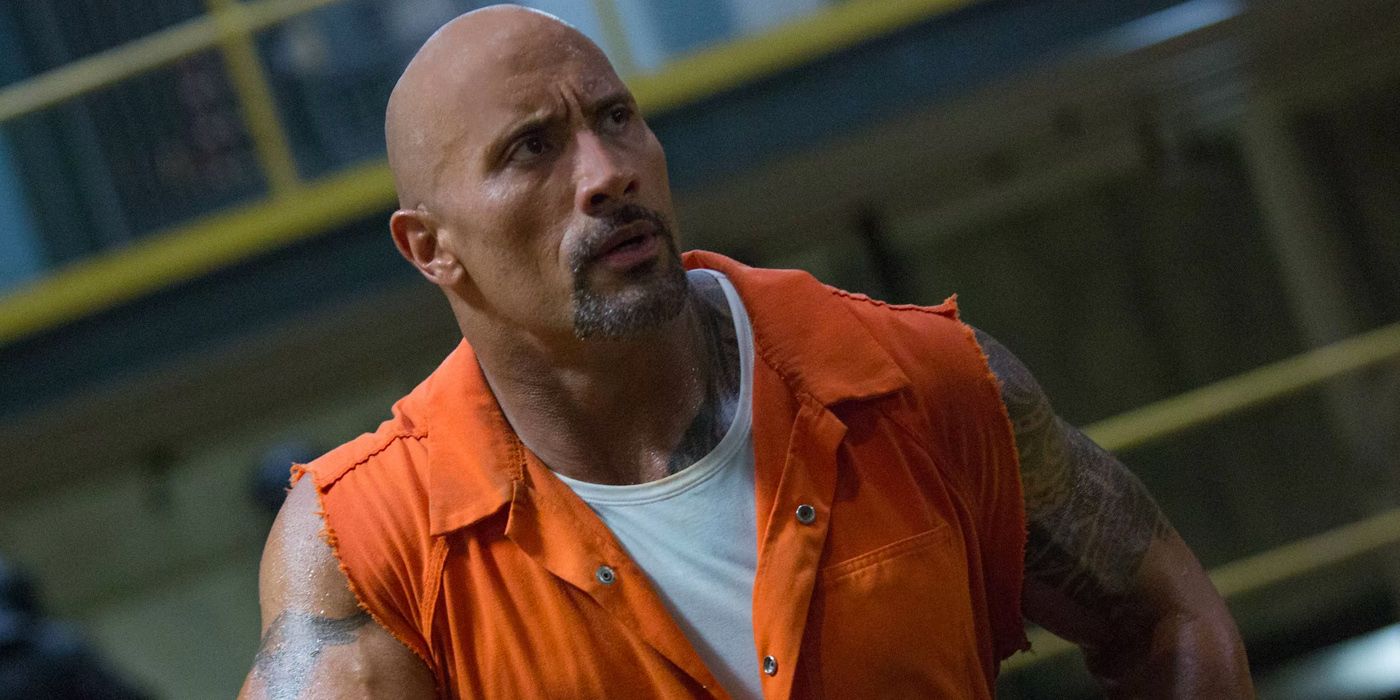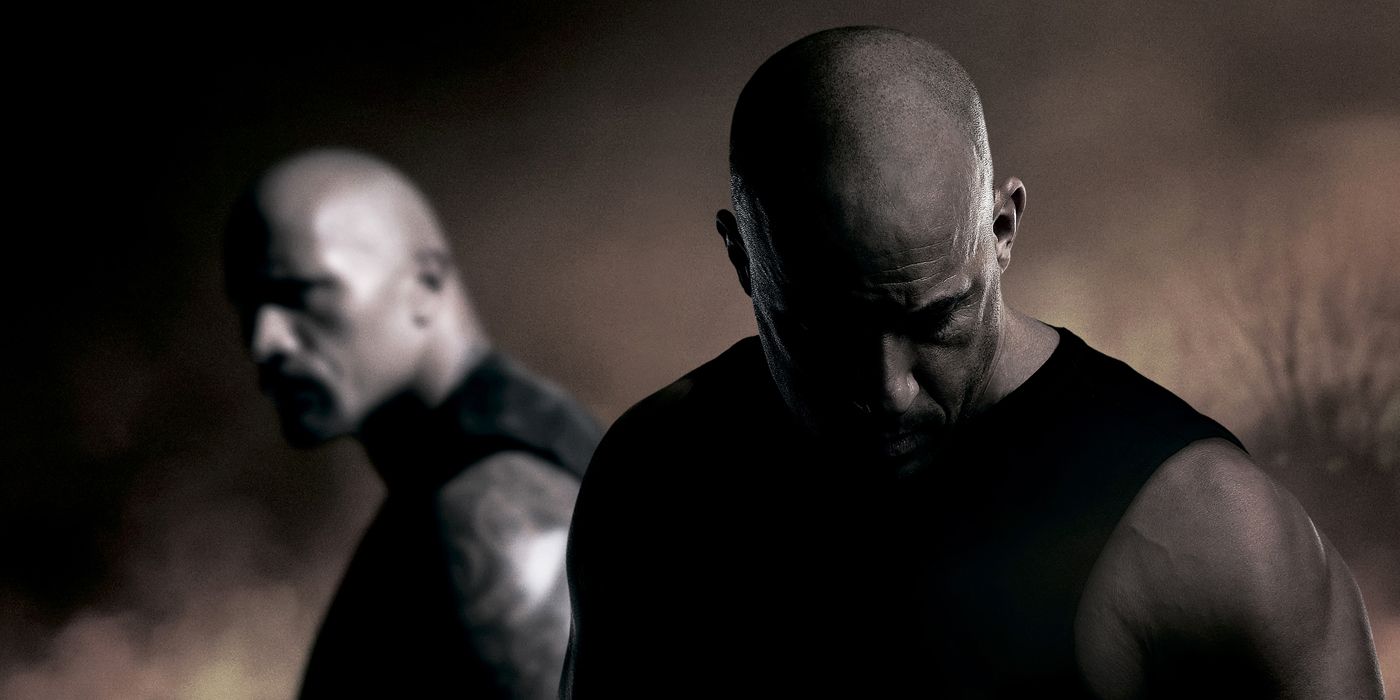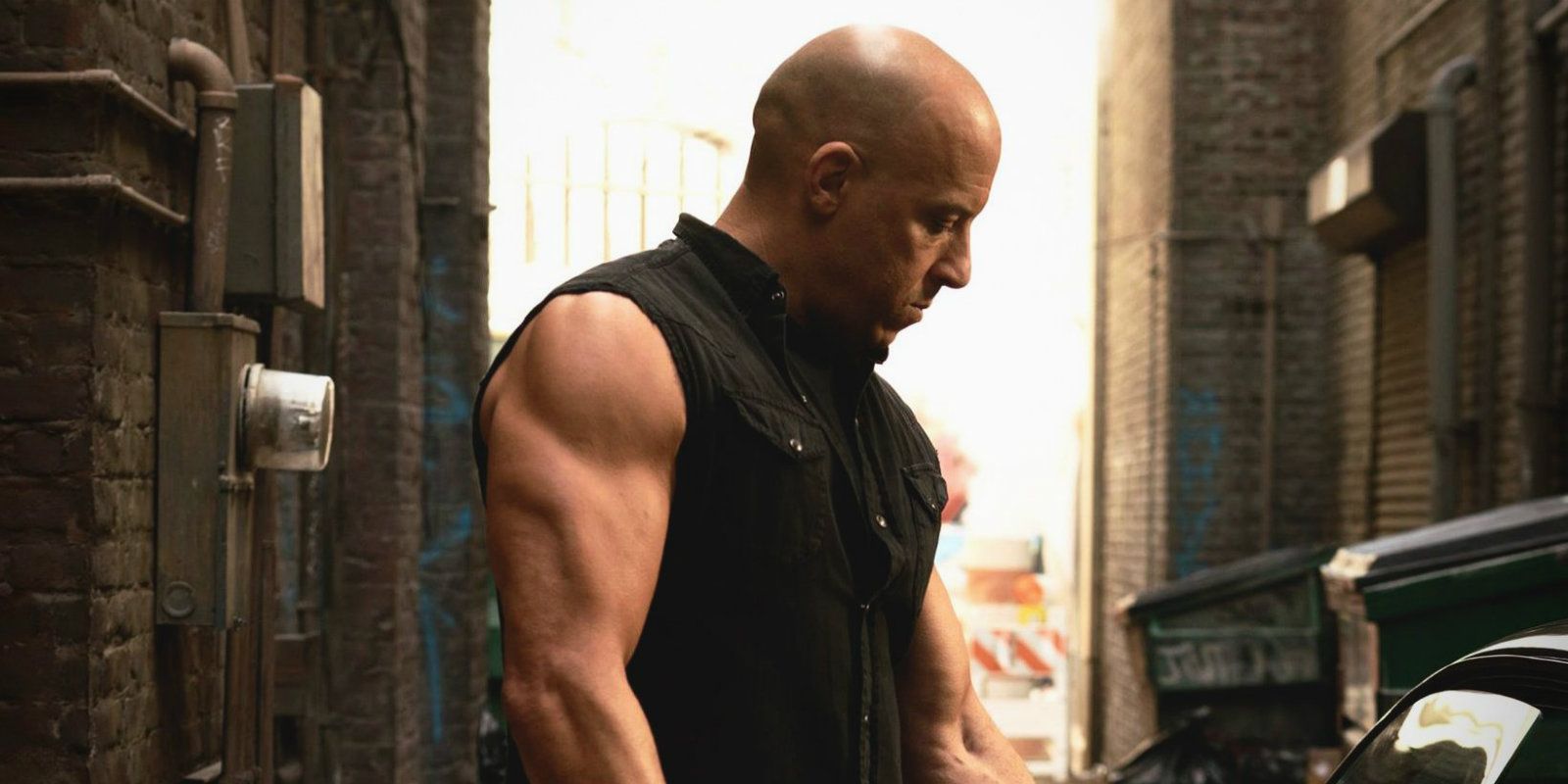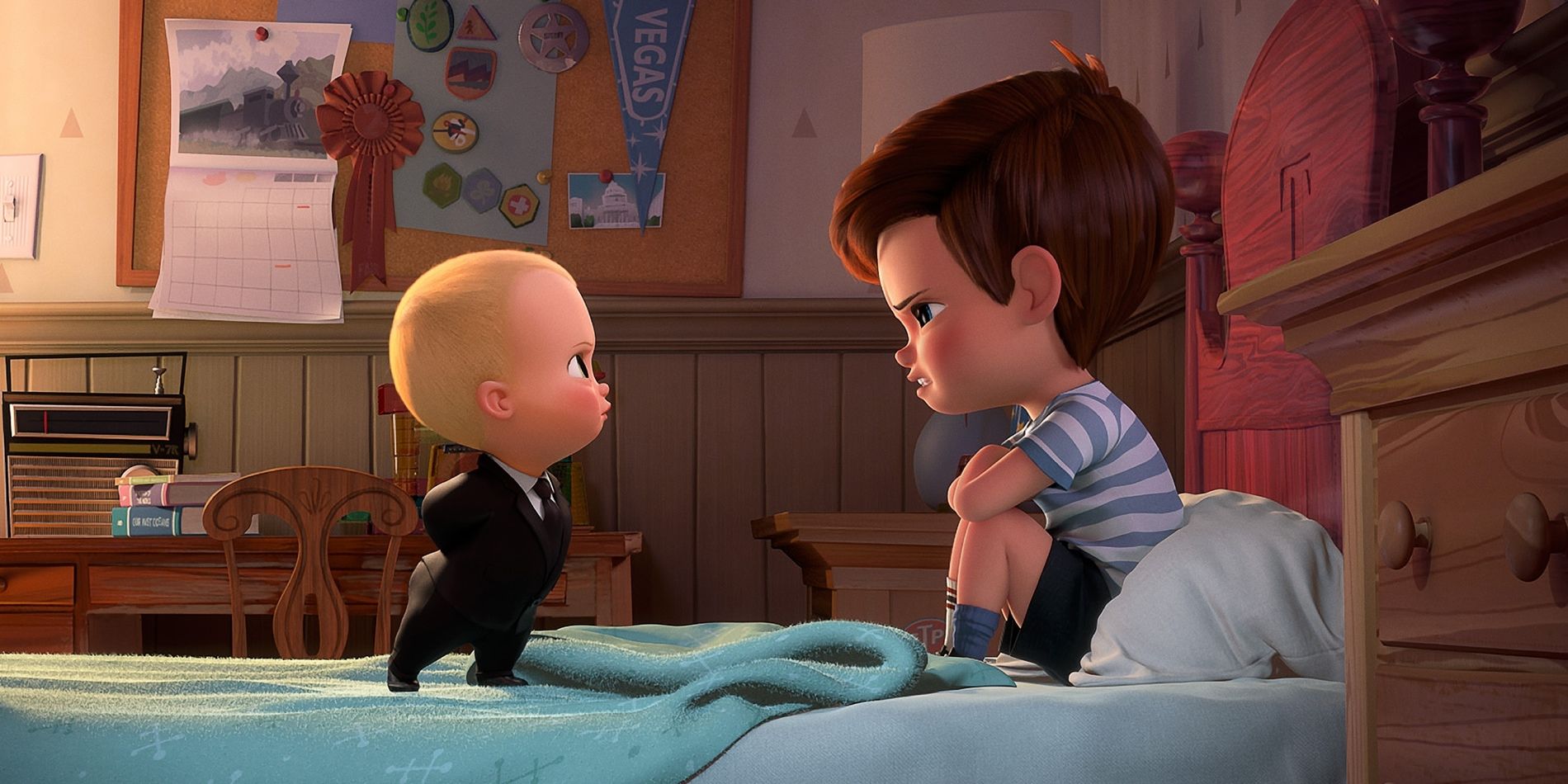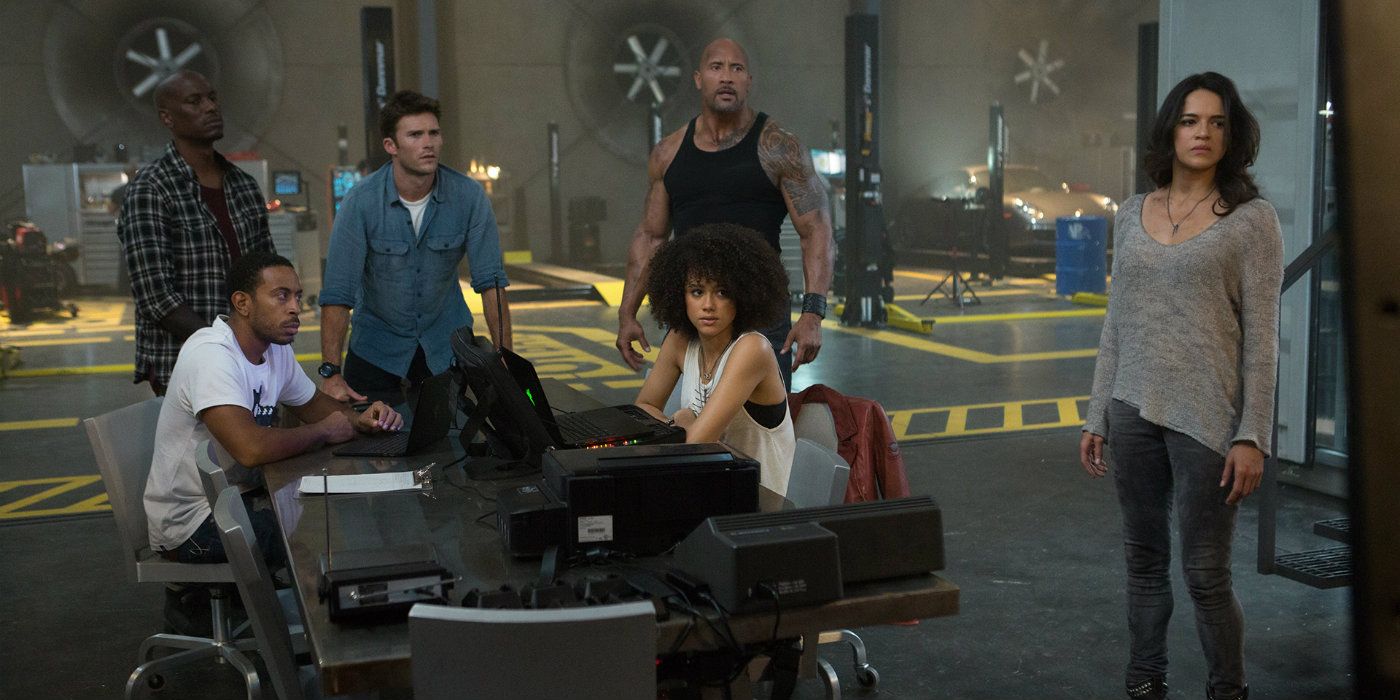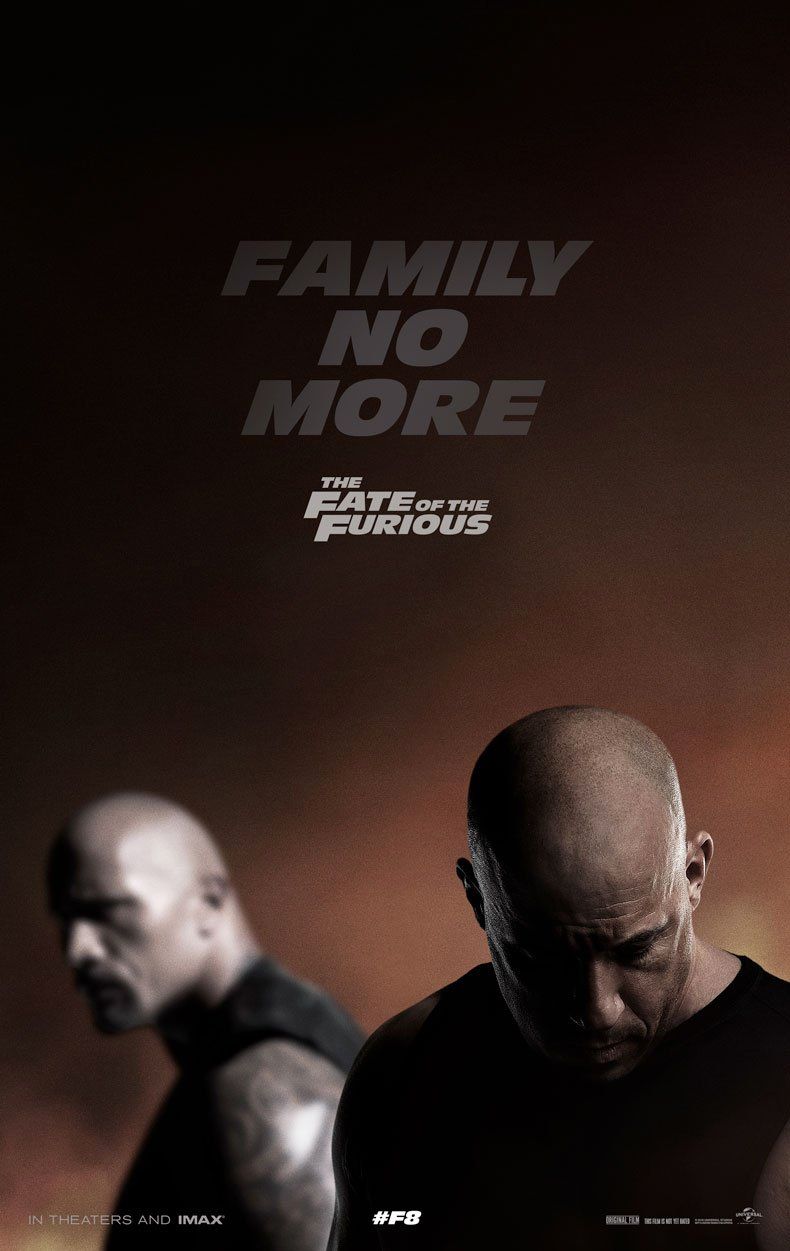The Fate of the Furious was always going to be big, although few predicted it would be this big. Far-out box office tracking had it set for an impressive haul, then week of release estimates upped that to over $400 million. Yet even those were massively off. When the weekend finally came to a close, it became apparent that the eighth movie in the Fast and Furious franchise wasn’t just having a big open: it was the biggest opening weekend of all time, making $532.5 million and displacing previous record holder Star Wars: The Force Awakens.
While it’s definitely unexpected for the return of Star Wars to be overshadowed so soon, it might not be as surprising as some feel. In fact, in retrospect, the film was always going to hit these heights and possibly overtake The Force Awakens. The film's long-term success is still to be determined, but in the wake of its unprecedented opening weekend, here are all the key factors in The Fate of the Furious’ box office smash.
The Franchise Is Still Accelerating
In almost flagrant disregard for the law of diminishing returns, the Fast and Furious franchise just continues to get bigger. Ignoring widely-regarded dud and general outlier Tokyo Drift, each movie has made more worldwide than the last. That’s right – over sixteen years, the series has stalled a gear-shift financially only once. Every other case has seen a step up on gross, and the increase has been getting bigger each time – 5 made $100 million more than 4, 6 $150 mil more than 5 and 7 double of 6 (we’ll get to the why of that in a moment). There’s been no sign of slowing, so while Furious 7’s $1.5 billion seemed like a ceiling, there was nothing to say it couldn’t be overtaken.
Few franchises can manage this consistent growth – even Marvel looks to be settling into a lower range – although what’s more remarkable is that, alongside this financial uptick, the perception of the series has changed too. After the first four, the series has become a semi-critical darling each scoring in the 60/70% range on Rotten Tomatoes (not a perfect metric, but serviceable). The latest has actually come under a little more fire than usual, but not enough to ward anyone off. Maintaining a general average quality is hard, but Vin Diesel and co. have managed it.
Residual Hype From The Handling of Paul Walker’s Death
What took Fast and Furious from being a solid ongoing franchise to a box office behemoth was Furious 7, and while the movie was always on that trajectory, what made it so big was how it handled the death of Paul Walker. Dealing with the death of a franchise star is always hard, but this was especially so for James Wan’s film as Walker’s tragic death happened sudennly and unexpectedly in the middle of production.
In the end, through a deft mix of CGI and body doubles (including Walker’s real-life brothers) Brian O’Connor’s arc was finished in a manner that paid tribute the character while allowing the franchise to continue forward without him. The end of the film - Diesel’s Dom Toretto and Brian driving off in different directions as a montage of previous films dedicated the film “For Paul” - was a sensitive, affecting tribute that showed a sincerity many didn’t know the franchise could achieve.
People, of course, turned out for Furious 7 out of memory for the star, but the handling of his legacy endeared the wider enterprise and encouraged people to stick around longer.
Wide Audience Appeal
This mix of ostensibly dumb action and heart, as well as intense self-awareness, is very important to Fast and Furious’ appeal. While it’s very easy to make a broad generalization and lump this in with the likes of Transformers as lowest-common-denominator entertainment that offers very little, there’s something more going on. The franchise does play to a similar audience, but it has a greater sense of awareness and lacks the same level of cynicism as Michael Bay’s magnum explosion-us. You don’t have to “leave your brain at the door”, you just need to accept it’s not going to get the most stringent workout. This means the series can simultaneously retain a teenage audience as they grow, tickle critics’ occasional hunger for cinematic junk food and overall be an unobjectionable prospect on a Friday night.
Star Wars has a similarly broad, four-quadrant appeal, of course – in fact, it crosses the divides between audiences (especially gender-wise in the Disney era) better – although that’s hardly a surprise to anyone given its rabidness; the same weekend Fate dominated the box office, Celebration 2o17 dominated the headlines. Fast and Furious' fandom is far more casual, but that doesn’t mean people don’t turn out.
The Rock/Diesel Conflict
It would take deeper social media analysis to really measure to impact this has had on Fate’s final total, but we’d be remiss to dismiss it outright. Over the past eight months, a seismic on-set dispute between Vin Diesel and Dwayne Johnson has slowly unfolded, with the latter losing patience with the former’s professional conduct; reports range from Diesel being unflappably late to set to him strongarming the studio into cutting a scene starring The Rock and Jason Statham that tested so well it brought up serious spinoff discussion again.
Back when the first explosion had died down, Johnson commented on social media that while Universal wasn't too pleased with the rift, it had helped the movie’s profile tracking. It’s since been played down by all involved but there's clearly been some level of influence. After all, it remains a key topic of discussion regardless and at the very least made fans aware the movie was impending. It also ties into our next point.
An Intriguing Story
Your typical Fast and Furious (at least post franchise rejuvenation with Fast 5) has the same plot: after a street race opening, Dom and his family are hired or otherwise find themselves having to stop a criminal more on the wrong side of the law than they are whose scheme spans the world and takes place in locations where cars – while not usually there – can be put in for action purposes.
The Fate of the Furious had all of these hallmarks, but with one key difference: Dom has gone rogue. The entire marketing has hinged on the mystery and impact of Dom turning on his family and necking with Charlize Theron’s Cipher, and while the actual execution in the movie leaves something to be desired, it’s quite a hook (one that helped fuel intrigue in the real life spat) and conveyed to everyone that F. Gary Gray was at least trying for something different within the model. The same but different - an ideal marketing pitch.
A Lack of Competition
All of these are within Fast and Furious’ control – or at least its built-up branding – but there’s one gift it got from other studios that will have helped: no competition. The biggest other new release was Going in Style, which with Michael Caine, Morgan Freeman and Alan Arkin was clearly targeting a very different audience. After them, everything else had been out a couple of weeks or more – Smurfs: The Lost Village (which has underwhelmed), The Boss Baby and Beauty and the Beast (which is slowly wrapping up after a month in cinemas and $1 billion gross). There was literally nothing to get in the way. Of course, studios purposely didn’t go up against Fast and Furious, but it’s a two-way benefit; they don’t want lower numbers, but in avoiding it increase Universal’s take.
This is the beauty of an April release. Once we get Guardians of the Galaxy Vol. 2 in early May (later April internationally) then there’s not a single week without a major release until the doldrums of August; had Fate come any later, then it would have found itself clashing with one of summer 2017’s many hot releases, either directly or through second week hangovers. This is why Star Wars has released its past two films in December and tried to mark it out as an untouchable month.
China
If you want a single reason why The Fate of the Furious has been such a success, though, this is it. In fact, like most box office markets, the previous points all feel moot next to the might of China. Over the past few years, the most populated country in the world has become a box office powerhouse, and in 2017 is actually set to overtake America as the biggest film territory in the world.
The big power behind this is the relaxing of long-standing restrictions. Now up to 34 outside films (most of which wind up being American) can be released in China, a number that increases when you factor in that a lot of movies – such as The Great Wall – are America/China co-productions and thus circumvent the limit. While getting into China at first seems like an easy way to simply boost a film’s coffers, there’s some movies that have a life of their own: both Warcraft and Terminator Genisys avoided being decried as flops thanks to major love in China.
What exactly will fly with Chinese audiences is still being locked in, but big, action-driven, not overtly-Americanized films are the key (and, contradictory to what Hollywood thinks, obvious pandering like The Great Wall or inserted scenes into the likes of Iron Man 3 don’t add much). Fast and Furious ticks those boxes amazingly and has been a smash in the country since Fast 6 popped the franchise's cherry, filling up another essential trait over the past few years; immediate recognition.
Not only is that the core of its success, it’s also why it beat Star Wars. Episode VII didn't open in this territory the same week as everywhere else so obviously it wasn't counted, but the issue's more ingrained than that. You see, all of the previously discussed factors combined couldn’t see Fate get even close to matching The Force Awakens domestically; in fact, on top of making less than half Star Wars at home, the film has barely made the Top 50 US openings. It's only because the Lucasfilm franchise just can’t get a foot in China that it raced past. Star Wars started when international films simply weren’t a thing in the country, so that multi-generation legacy and nostalgia that has made the past few years in the West Force-powered nirvana simply doesn’t exist. It’s this factor that saw The Force Awakens and Rogue One delaying their releases to drum up hype and still struggling in the country despite having been #1 pretty much everywhere else, on a worldwide scale meaning it failed to reach the heights of Avatar and allowing Fast and Furious to later best its opening worldwide.

